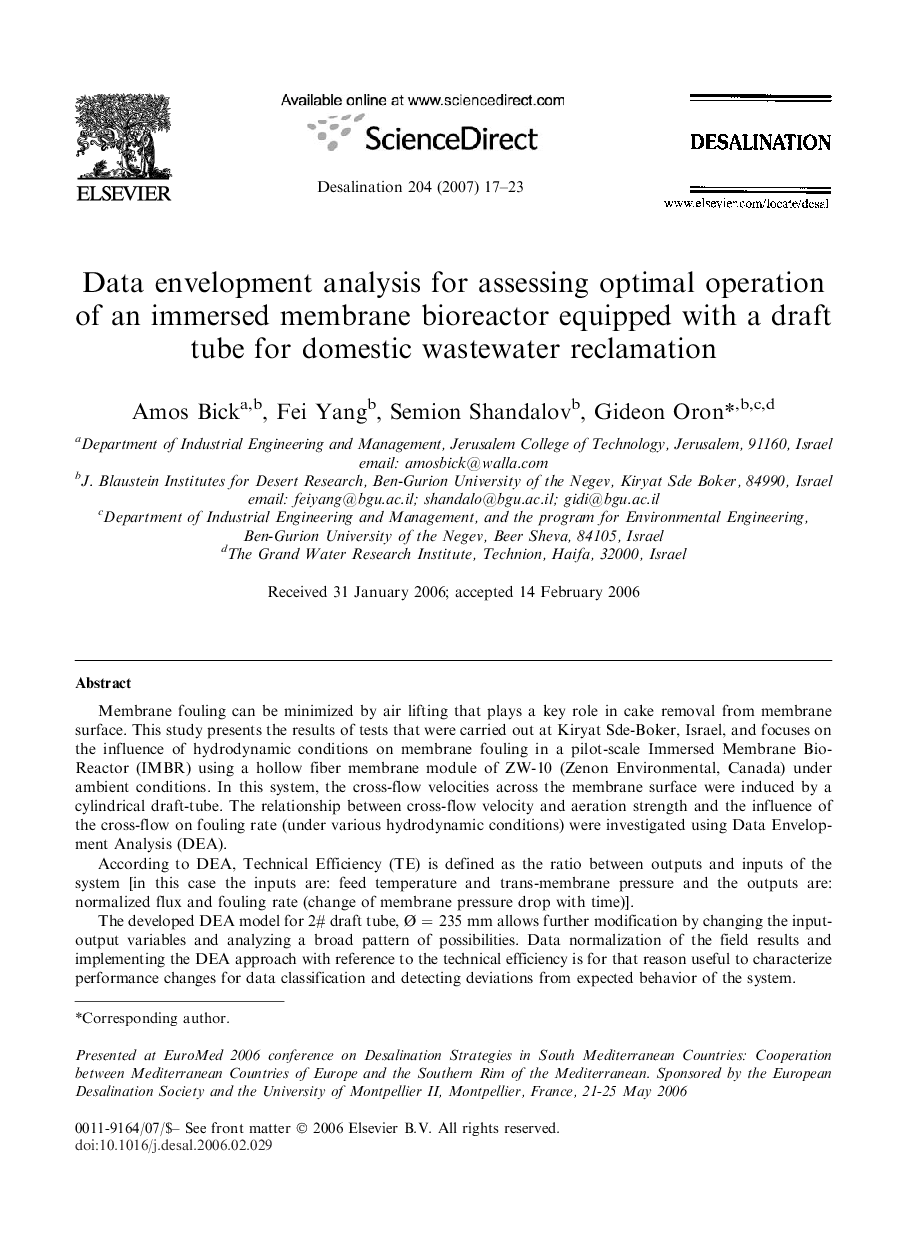| Article ID | Journal | Published Year | Pages | File Type |
|---|---|---|---|---|
| 628229 | Desalination | 2007 | 7 Pages |
Membrane fouling can be minimized by air lifting that plays a key role in cake removal from membrane surface. This study presents the results of tests that were carried out at Kiryat Sde-Boker, Israel, and focuses on the influence of hydrodynamic conditions on membrane fouling in a pilot-scale Immersed Membrane Bio-Reactor (IMBR) using a hollow fiber membrane module of ZW-10 (Zenon Environmental, Canada) under ambient conditions. In this system, the cross-flow velocities across the membrane surface were induced by a cylindrical draft-tube. The relationship between cross-flow velocity and aeration strength and the influence of the cross-flow on fouling rate (under various hydrodynamic conditions) were investigated using Data Envelopment Analysis (DEA).According to DEA, Technical Efficiency (TE) is defined as the ratio between outputs and inputs of the system [in this case the inputs are: feed temperature and trans-membrane pressure and the outputs are: normalized flux and fouling rate (change of membrane pressure drop with time)].The developed DEA model for 2# draft tube, Ø = 235 mm allows further modification by changing the inputoutput variables and analyzing a broad pattern of possibilities. Data normalization of the field results and implementing the DEA approach with reference to the technical efficiency is for that reason useful to characterize performance changes for data classification and detecting deviations from expected behavior of the system.
